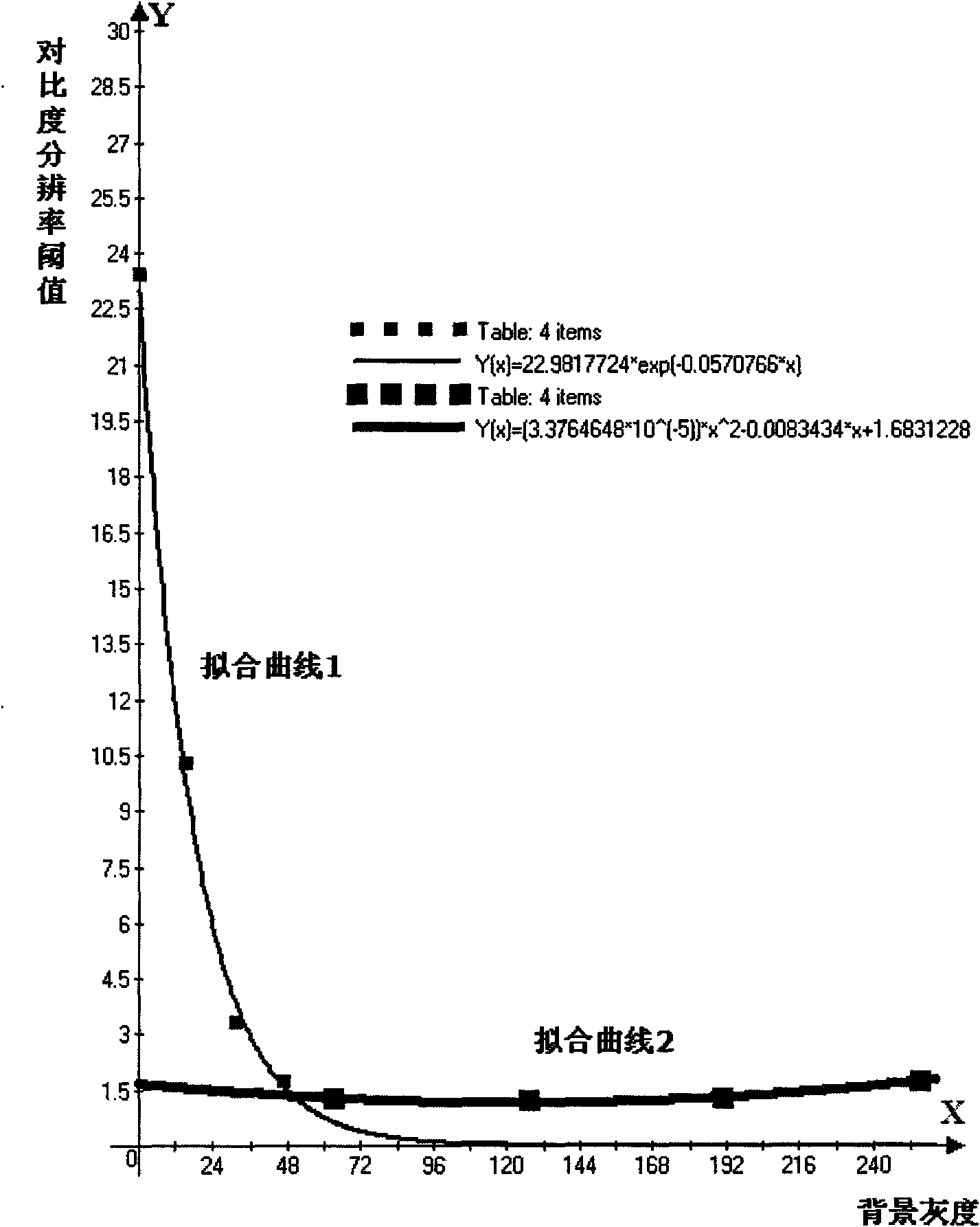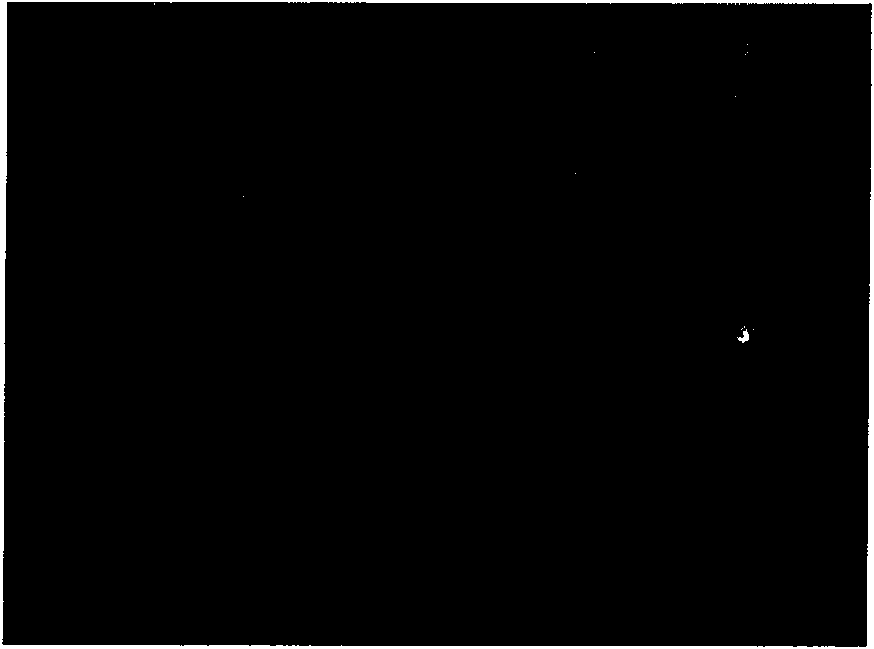Nonlinear compensation process for human visual contrast
A nonlinear compensation and human vision technology, applied in the field of nonlinear compensation, can solve the problems of not reaching the threshold of human visual contrast resolution, unable to distinguish useful image information, unable to recognize image information, etc., and achieve the compensation of human visual contrast resolution. Effect
- Summary
- Abstract
- Description
- Claims
- Application Information
AI Technical Summary
Problems solved by technology
Method used
Image
Examples
Embodiment 1
[0031] Such as figure 1 Shown: A non-linear compensation method for human visual contrast resolution, proceed as follows:
[0032] (1) Select the image obtained under low illumination as the source image: detect the gray spectrum of the gray image, and select the gray image whose main gray information is below gray level 47 as the source image.
[0033] image 3 It is the source image, and human vision can only see a black one, and cannot distinguish useful information. Figure 4 is the grayscale spectrum corresponding to the source image. From Figure 4 It can be seen that the source image contains grayscale information, and its main grayscale information is below grayscale level 5.
[0034] (2) Obtain the original gray value og(x, y) of each pixel in the source image.
[0035] (3) Calculate the target gray value after the original gray value of each pixel is compensated, and the target gray value is obtained by the following formula:
[0036] TG ...
Embodiment 2
[0045] This embodiment is roughly the same as Embodiment 1, and its difference is: as Figure 8 , 9 As shown in , 10, and 11, the source images are different, and the target images obtained are also different.
PUM
 Login to View More
Login to View More Abstract
Description
Claims
Application Information
 Login to View More
Login to View More - R&D
- Intellectual Property
- Life Sciences
- Materials
- Tech Scout
- Unparalleled Data Quality
- Higher Quality Content
- 60% Fewer Hallucinations
Browse by: Latest US Patents, China's latest patents, Technical Efficacy Thesaurus, Application Domain, Technology Topic, Popular Technical Reports.
© 2025 PatSnap. All rights reserved.Legal|Privacy policy|Modern Slavery Act Transparency Statement|Sitemap|About US| Contact US: help@patsnap.com



